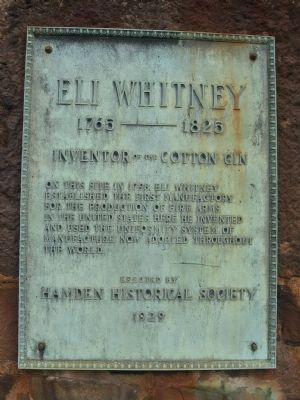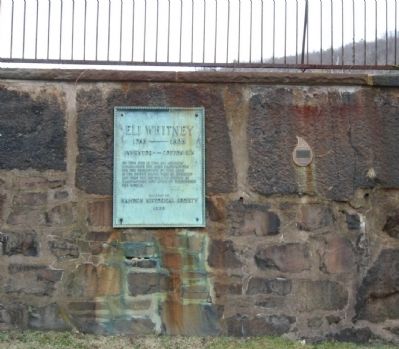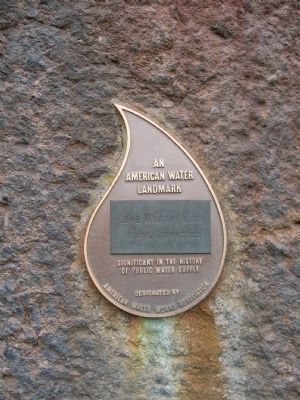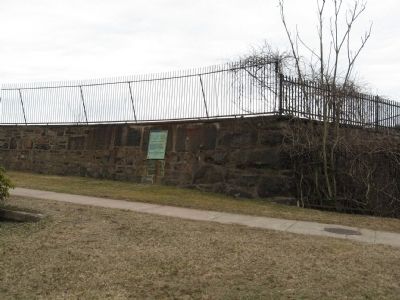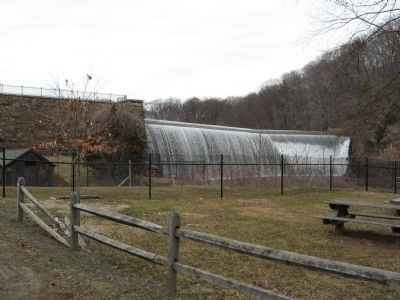Hamden in New Haven County, Connecticut — The American Northeast (New England)
Eli Whitney
1765 - 1825
— Inventor of the Cotton Gin —
Erected 1929 by the Hamden Historical Society.
Topics. This historical marker is listed in this topic list: Industry & Commerce. A significant historical year for this entry is 1765.
Location. 41° 20.224′ N, 72° 54.667′ W. Marker is in Hamden, Connecticut, in New Haven County. Marker is at the intersection of Whitney Avenue and Armory Street, on the right when traveling north on Whitney Avenue. Located on the wall of the Lake Whitney Dam at the Eli Whitney Museum. Touch for map. Marker is in this post office area: Hamden CT 06518, United States of America. Touch for directions.
Other nearby markers. At least 8 other markers are within 2 miles of this marker, measured as the crow flies. A. Frederick Oberlin Bridge (about 400 feet away, measured in a direct line); Eli Whitney Armory (about 400 feet away); Pardee Rose Garden (approx. half a mile away); Soldiers and Sailors Monument (approx. ¾ mile away); St. Stanislaus Servicemen (approx. 1.7 miles away); Theodore Dwight Woolsey (approx. 1.7 miles away); Walter Camp (approx. 1.8 miles away); Edward Robinson Smith (approx. 1.8 miles away). Touch for a list and map of all markers in Hamden.
Also see . . .
1. Eli Whitney, Jr. Wikipedia entry (Submitted on March 17, 2010, by Michael Herrick of Southbury, Connecticut.)
2. Eli Whitney Museum. Wikipedia entry (Submitted on January 14, 2021, by Larry Gertner of New York, New York.)
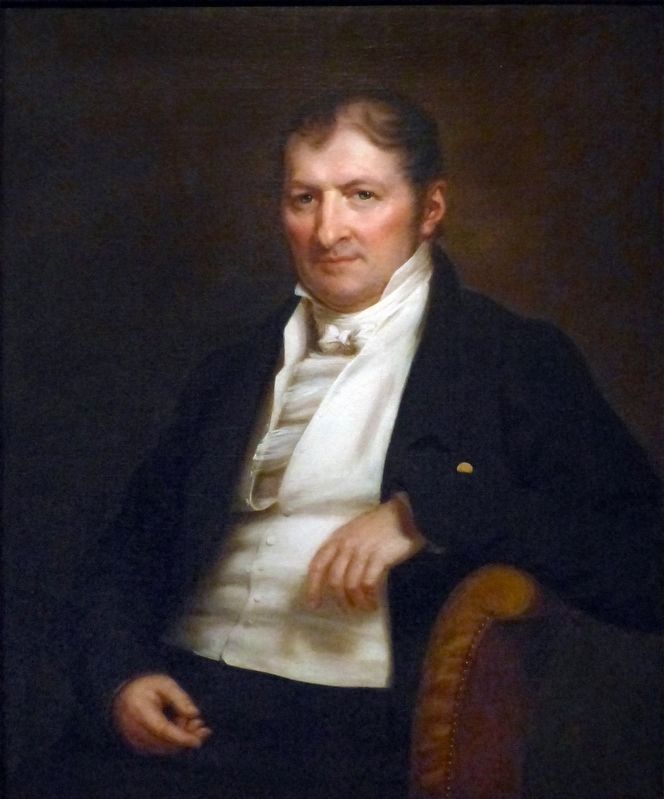
Photographed By Allen C. Browne, July 17, 2018
5. Eli Whitney
This 1821 portrait of Eli Whitney by Charles Bird King hangs in the National Portrait Gallery in Washington, DC.
“Eli Whitney, the son of a Massachusetts farmer, played an instrumental role in inventing the cotton gin and in creating standardized parts for firearms. These two important developments not only impacted manufacturing in the United States but also influenced nineteenth-century American society. The cotton gin (‘gin’ is short for ‘engine’) is a device that separates cotton fibers from their seeds. Whitney fabricated the first prototype around 1792 while working as a tutor on a plantation in Georgia. Its efficiency permitted the tremendous expansion of cotton cultivation, fueling the spread of the slave system and the industrial revolution in textile production.
Because the gin was such a simple device, it was easily pirated by Southern planters and Whitney never profited from it. Almost as important was Whitney's subsequent pioneering development of a process for making muskets by having an assembly line put together standardized parts. According to family history, this portrait of Whitney was painted in the summer of 1821.” -- NPG
“Eli Whitney, the son of a Massachusetts farmer, played an instrumental role in inventing the cotton gin and in creating standardized parts for firearms. These two important developments not only impacted manufacturing in the United States but also influenced nineteenth-century American society. The cotton gin (‘gin’ is short for ‘engine’) is a device that separates cotton fibers from their seeds. Whitney fabricated the first prototype around 1792 while working as a tutor on a plantation in Georgia. Its efficiency permitted the tremendous expansion of cotton cultivation, fueling the spread of the slave system and the industrial revolution in textile production.
Because the gin was such a simple device, it was easily pirated by Southern planters and Whitney never profited from it. Almost as important was Whitney's subsequent pioneering development of a process for making muskets by having an assembly line put together standardized parts. According to family history, this portrait of Whitney was painted in the summer of 1821.” -- NPG
Credits. This page was last revised on January 14, 2021. It was originally submitted on March 17, 2010, by Michael Herrick of Southbury, Connecticut. This page has been viewed 1,153 times since then and 29 times this year. Photos: 1, 2, 3, 4. submitted on March 17, 2010, by Michael Herrick of Southbury, Connecticut. 5. submitted on July 21, 2018, by Allen C. Browne of Silver Spring, Maryland. 6. submitted on March 17, 2010, by Michael Herrick of Southbury, Connecticut.
